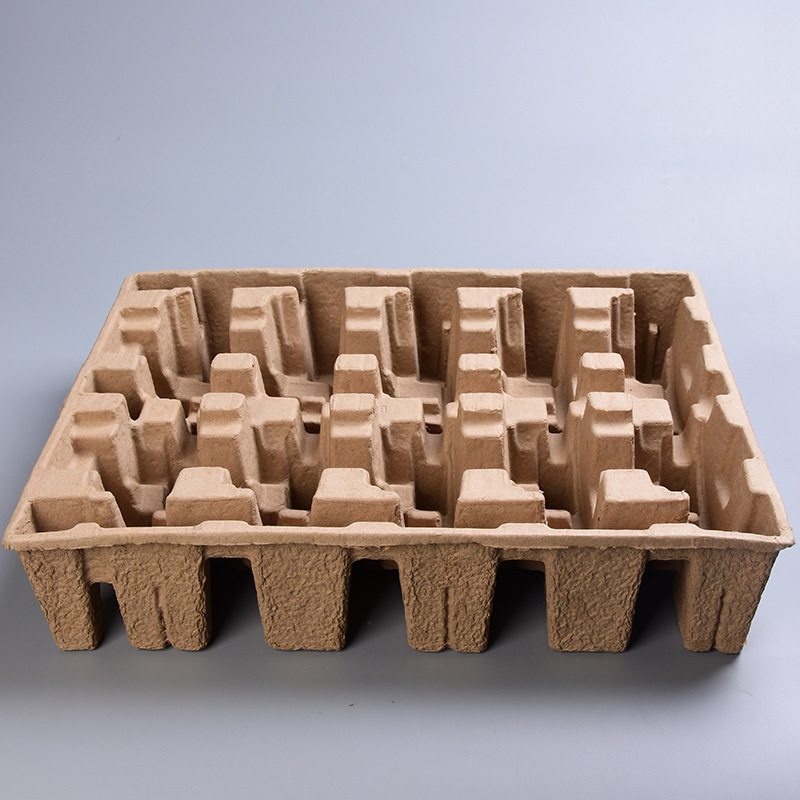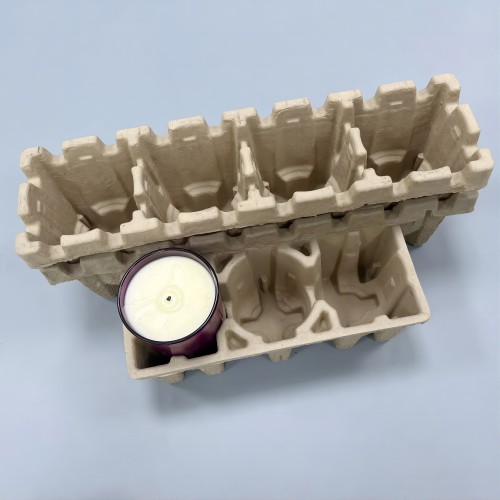What is cardboard pulp molding used for? This article explores the various applications and advantages of this sustainable packaging solution. Cardboard pulp molding, also known as molded pulp or molded fiber, is a manufacturing process that involves converting recycled paper materials into packaging products and components. It offers a versatile and eco-friendly alternative to conventional packaging materials, such as plastic or styrofoam. Let's dive deeper and explore the diverse uses of cardboard pulp molding.

1. Food Packaging
Cardboard pulp is widely used in the food industry for packaging eggs, fruits, vegetables, and other perishable items. Its excellent cushioning and insulating properties help protect delicate foods during transportation and storage. The material is biodegradable and compostable, ensuring a safe and sustainable solution for food packaging. Additionally, molded pulp trays can be customized to accommodate different product sizes and shapes, reducing the chances of damage during transit.
2. Electronics Packaging
In the electronics industry, cardboard pulp molding finds extensive application in packaging fragile items like smartphones, laptops, and other electronic devices. The shock-absorbing nature of molded pulp provides effective protection against impact and vibration during shipping. The lightweight yet sturdy composition of the material ensures secure packaging while minimizing the overall weight of the package, reducing shipping costs and environmental impact.
3. Medical and Pharmaceutical Packaging
Cardboard pulp molding is ideal for medical and pharmaceutical packaging due to its hygienic and sterile properties. It can be used to manufacture trays, vials, and other containers for storing and transporting medical supplies, vials, ampoules, and even dental kits. The natural fibers in the molded pulp help absorb moisture, maintaining the integrity and quality of the enclosed products. Moreover, its biodegradability eliminates the risk of environmental pollution associated with conventional plastic packaging.

4. Consumer Goods Packaging
Cardboard pulp molding is widely used for packaging various consumer goods, including cosmetics, home appliances, shoes, and toys. The customizable nature of molded pulp allows manufacturers to create tailor-made packaging solutions that provide optimal protection and enhance the visual appeal of the products. The material is also easy to print on, enabling branding and product information to be displayed effectively, further enhancing the customer experience.
5. Industrial Packaging
Cardboard pulp molding is increasingly gaining popularity in industrial packaging due to its strength and durability. It offers excellent shock resistance and can withstand heavy loads, making it suitable for packaging automotive components, machinery parts, and other industrial products. The ability to mold the material into complex shapes allows for snug fit packaging, eliminating the need for additional cushioning materials and reducing waste.

6. Sustainable Alternative to Single-Use Plastics
One of the most significant advantages of cardboard pulp molding is its contribution to reducing plastic waste. With increasing awareness of environmental issues, there is a growing demand for sustainable packaging solutions. Molded pulp packaging offers a renewable and biodegradable alternative to single-use plastics, reducing the carbon footprint and minimizing waste generation. By utilizing recycled materials, cardboard pulp molding supports the circular economy and promotes a greener future.
Conclusion
Cardboard pulp molding presents a sustainable solution for a wide range of packaging needs. Whether it is food, electronics, medical supplies, consumer goods, or industrial products, molded pulp offers reliable protection, customization options, and environmental benefits. By embracing this eco-friendly alternative to conventional packaging materials, we can contribute to a greener, more sustainable future while ensuring the safe delivery and storage of products worldwide.

